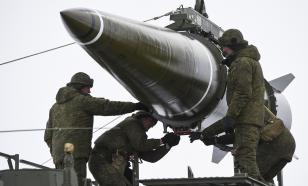Horrors of IVF technology do not stop desperate childless families
Test tube babies conceived through in vitro fertilization (IVF) are no more exotic. Moreover, in vitro fertilization is now the basic way to solve the problem of sterility worldwide. However, IVF is a relatively new method that is still shrouded in mystery.

The stages of IVF:
1. The integrated investigation of a couple. Some kinds of sterility can be cured medicamentally or surgically without IVF; in some cases, the conception is not possible at all.
2. If IVF is reasonable, the woman begins to take hormonal agents to stimulate the growth and ripening of at once several folliculi containing ova in the ovaries.
3. After the ripening of the folliculi the ova are retrieved from them with a special needle under anesthesia and ultrasound control. The man must provide his semen during that process. If the semen generation is disturbed, the spermatozoa are derived through puncture or biopsy of the testicle.
4. The ova placed in a special nutrient solution are fertilized with sperm suspension prepared in the embryological laboratory. If sperm cells cannot penetrate the ovum, there is a solution too: the only spermatozoon is put into the ovum with a glass needle under the microscope (the operation is known as the intracytoplasmic sperm injection, ICSI).
5. The fertilized ova are placed into the incubator, where the development of embryos begins. On the third day, when the embryos consist of eight cells only, they are transferred with a catheter into the uterine cavity for bearing. There are usually several embryos transferred into the womb (by the Russian laws – no more than three) in order to increase the chances for pregnancy.
More than three million children have been born through IVF worldwide. However, the lack of the comprehensive information about the consequences of applying this method gives many reasons for doubt. Some presume that interfering in the natural way of conception leads to the birth of defective children. Others say that IVF endangers the health of mothers and their children and ruins the gene pool of mankind.
The most widespread concerns are listed below.
The first: ovarian hyperstimulation syndrome
Nadezhda Mitrofanova from Moscow, 34 years old, suffered from this syndrome. She got nausea, pain in the lower part of the stomach and general sickness after the transfer of embryos and the beginning of pregnancy due to IVF. Her attending obstetrician-gynecologist said that the liquid had begun to gather in the abdominal cavity. The doctors had to puncture the stomach to let the liquid out, but things have come out right, and she became a happy mother three months ago.
Valeriy M. Zdanovskiy, Doctor of Medical Sciences:
“IVF requires several embryos, but there is only one ovum that is normally generated in the woman’s body during a menstrual cycle. To cope with this contradiction, the hormonal stimulation of woman’s ovaries is carried out. Thus, several folliculi containing full-grown ova ripen in the ovary during one menstrual cycle. At the same time, the own hormonal activity of the woman’s body is suppressed with special medicines, for the autonomic ripening of the folliculi is inadmissible during the stimulation.
“However, the hormonal balance is an individual matter. In about 5% of cases the standard doses of the stimulating medicines turn out to be excessive. Then the ovarian hyperstimulation syndrome appears – an excessive activity of these organs, when the whole organism suffers.
“In mild cases, one may feel the drawing pain in the lower part of the stomach (like on the first day of menstruation), the appetite decline, nausea, diarrhea and increased fatigability. Such a condition requires just bed rest and medical supervision. In severe cases, which are fortunately seldom, things may come to ovarian hemorrhage, appendix twisting, renal insufficiency, thromboembolism (obturation of vessels with blood clots) and other major complications that are dangerous for life and require hospitalization.
“In order to minimize the risk of the ovarian hyperstimulation syndrome, many clinics practice the minimum of stimulation or take ova without stimulation at all using the “natural cycle”. Certainly, this method cannot be applied to all women and allows to obtain a smaller quantity of ova, which reduces chances for pregnancy. At the same time, it involves a lot less risks for woman’s health.
“Nevertheless, with the growth of the number of IVF procedures in the world gives specialists an opportunity to become more experienced in the field, That’s why we can hope that “the golden mean” will soon be found – the minimal stimulation of ovaries, when the sufficient number of ova ripens”.
The second concern: a baby may develop abnormally
A recent research conducted in the USA revealed a higher risk of possible abnormalities with test tube babies. The hare lip deformity (a cleft dividing the upper lip) , as well as various heart deformities, the underdevelopment of the gullet and the rectums appear a lot more frequently with such babies.
Viktoriya Voinova, Candidate of Medical Science:
“Indeed, the children born through IVF may have more defects in their development. We do not know exactly why it happens. However,a higher risk of certain defects will hardly make childless families avoid the IVF method. The probability of delivering a child with congenital defects exists always.
Moreover, all the listed defects are not dangerous for the life of a child nowadays: they can be surgically corrected and then will in no way affect the future life of a baby. The deformities cannot be inherited.
As for more serious anomalies, such as Down's syndrome and other chromosome and genetic mutations, the pre-implantation genetic diagnostics is carried out. Besides, the monitoring for detecting the malfunctions is done at certain stages of pregnancy. At last, when the embryo has serious genetic defects, the pregnancy is likely to end at early stages.
The third concern: multiple pregnancy
Anna Mazurkevich from Nizhny Novgorod, 32 years old, got three embryos by means of IVF. They all were growing normally, but because of her diminutive constitution and the insufficient pelvis size the bearing of triplets was considered too risky: one embryo was removed to let two others develop normally.
Oksana V. Starkova a g ynecologist:
“The IVF technology requires transferring several embryos into the uterine cavity. When only one embryo is implanted, chances for pregnancy are too low. That’s why several embryos are usually implanted, but even in this case no more than 30-35% of IVFs result in pregnancy and about 25% - in delivering a healthy child. However, several embryos may begin to develop simultaneously. In this case, doctors are compelled to make a reduction - to remove one of the embryos, especially when a woman is not anatomically fit for a multiple pregnancy.
“The IVF technology is being constantly improved, and now the necessity of reduction occurs very seldom. As a rule, no more than two embryos are implanted into the womb, and the woman takes the minimum of the hormonal medicines. That’s why there is mostly no problem with the redundant embryo”.
Medportal
Subscribe to Pravda.Ru Telegram channel, Facebook, RSS!


